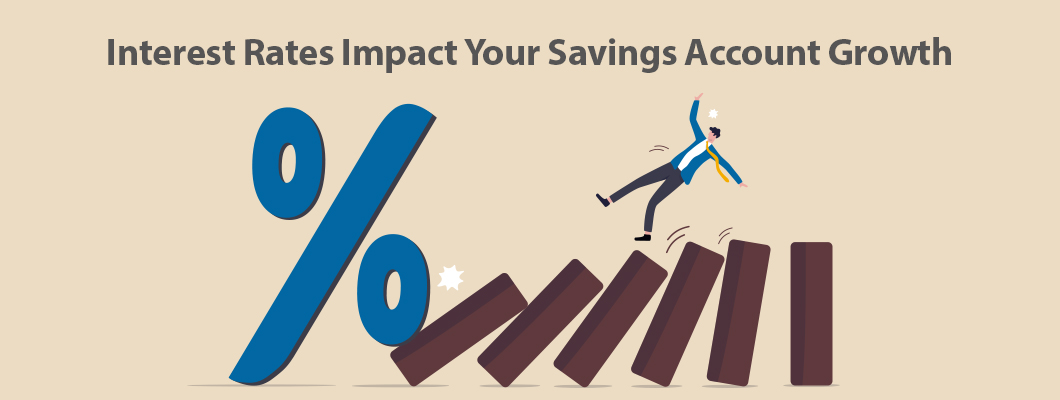
How Interest Rates Impact Your Savings Growth
Posted on Monday, August 28th, 2023 | By IndusInd Bank
Saving money is an essential financial habit that provides a safety net and a foundation for future financial goals. However, just stashing away your money in a traditional savings account isn’t enough. To truly preserve and grow your wealth, you must not only save but also invest wisely. One critical factor in this process is understanding how interest rates impact your savings growth.
1. Beating Inflation:
Inflation erodes the purchasing power of money over time. If your savings aren’t growing at a rate that outpaces inflation, you’re essentially losing money in terms of real value. Interest rates play a vital role in determining whether your savings can keep up with or exceed the inflation rate.
2. Compound Interest Magic:
Compound interest is like a turbocharger for your savings. It’s the interest you earn on both your initial deposit and the interest that accumulates over time. The higher the interest rate, the faster your savings will snowball through compounding. This is why the interest rate you receive matters greatly.
3. Accelerated Savings Growth:
A higher interest rate accelerates the growth of your savings. Even a slight increase in the interest rate can lead to significantly more money over time. This can make a substantial difference in achieving your financial goals, whether it’s buying a home, sending your kids to college, or retiring comfortably.
4. Risk vs. Reward:
Different investment options come with different risk profiles. Savings accounts come with assured returns, eliminating any potential for loss. It’s important to find the right balance based on your risk tolerance and financial objectives.
5. Liquidity and Accessibility:
Interest rates can affect the liquidity and accessibility of your savings. Some investment options restrict your access to funds for a specific period. However, a savings account allows you to withdraw money more easily. Finding a balance between earning a good interest rate and maintaining liquidity is crucial.
Opening an IndusInd Bank Online Savings Account:
In today’s digital age, convenience and accessibility are key considerations when choosing a savings account. IndusInd Bank offers an Online Savings Account that makes the process easy and efficient. Here’s how you can open an account in just four simple steps:
1. Choose an Account Number: Select an account number of your choice to personalize your banking experience.
2. Provide Your Details: Enter your personal and contact information accurately.
3. Add Funds: Transfer the initial funds to your newly created account. This step kickstarts your savings journey with IndusInd Bank.
4. Complete Video KYC: IndusInd Bank offers the convenience of Video KYC. This means you can verify your identity from anywhere, at any time, without the need to visit a physical branch.
Conclusion:
In the world of personal finance, saving money is just the beginning. To achieve your financial goals and preserve your wealth, it’s crucial to understand how interest rates impact your savings growth. A higher interest rate not only helps beat inflation but also accelerates the compounding of your money. Choosing the right savings account, like the IndusInd Bank Online Savings Account, can offer competitive interest rates while providing the convenience of digital banking. Remember, informed decisions about your savings can pave the way for a financially secure future.
Open IndusInd Bank Online Savings Account today
Disclaimer: The information provided in this article is generic in nature and for informational purposes only. It is not a substitute for specific advice in your own circumstances. Hence, you are advised to consult your financial advisor before making any financial decision. IndusInd Bank Limited (IBL) does not influence the views of the author in any way. IBL and the author shall not be responsible for any direct/indirect loss or liability incurred by the reader for taking any financial decisions based on the contents and information.



 Offers
Offers Rates
Rates Debit Card Related
Debit Card Related Credit Card Related
Credit Card Related Manage Mandate(s)
Manage Mandate(s) Get Mini Statement
Get Mini Statement
 categories
categories Bloggers
Bloggers Blog collection
Blog collection Press Release
Press Release


